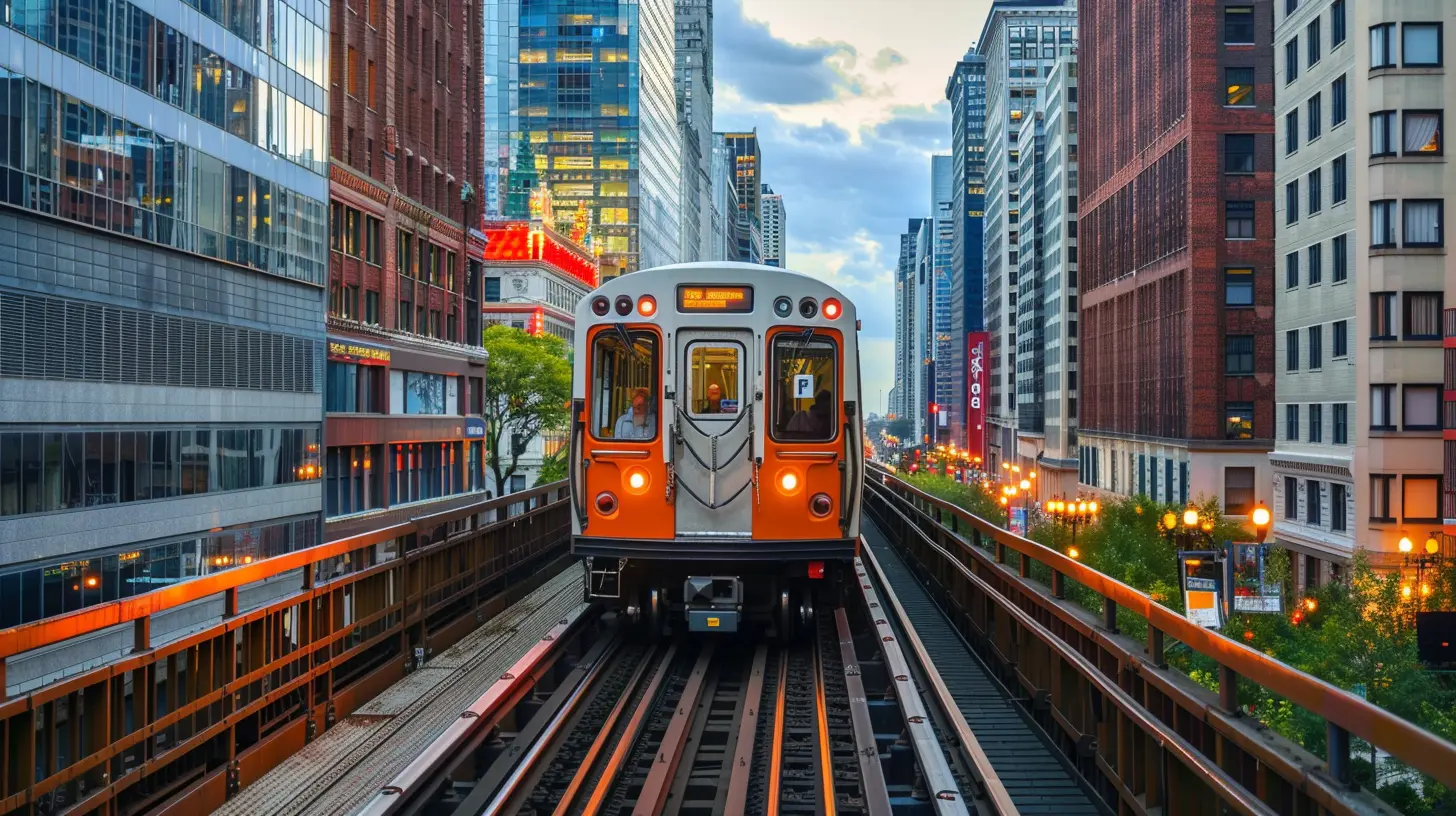How to Save on Daily Commutes in an Expensive City
21 October 2025
Let’s face it—living in a big, bustling city is exciting, but it sure comes with a hefty price tag. Between the rent, groceries, social life, and that killer cup of iced latte you swear you need to survive, your wallet is already sweating. Add daily commutes to the list, and it's no wonder your budget feels like it’s on life support.
Whether you're commuting for work, school, or just to run errands, getting around an expensive city can bleed your bank account dry. The good news? It doesn’t have to be that way. With a few smart tweaks and a bit of planning, you can cut your commuting costs without sacrificing your sanity (or your morning coffee). Sounds good? Let's dive right in.
Why Commuting Costs Creep Up So Easily
Ever glanced at your monthly budget and thought, “Wait, how did I spend that much just getting around?” You're not alone. In cities like New York, San Francisco, London, or Tokyo, people can easily spend hundreds—sometimes thousands—a month on transportation.You’ve got train fares, rideshares, gas, parking, tolls, and maintenance if you’re driving. If you're using public transit, ticket prices rise like clockwork. And let’s not even talk about surge pricing. It’s like commuting came with a built-in subscription to a bad money habit.
1. Rethink Your Transportation Method
🚶♀️ Walk or Bike Whenever Possible
It might sound obvious, but walking or biking can be a game-changer for your budget—and your health. If your workplace or daily destinations are just a few miles away, do you really need to take a $15 Uber?Investing in a good quality bike (and a lock, don’t forget the lock) can save you loads over time. Many cities even offer bike-share programs that are cheaper than public transport.
Bonus: No traffic jams, fresh air, and maybe you’ll finally hit those 10,000 daily steps your fitness app keeps nagging you about.
🛴 Try Electric Scooters or E-Bikes
Urban mobility is changing FAST. Micro-mobility options like electric scooters and e-bikes are popping up everywhere. They're fun, zippy, and much cheaper than hailing a cab or using rideshare for short distances. Just be sure to use them safely—and wear a helmet.
2. Embrace Public Transportation (The Right Way)
Public transit gets a bad rap, but it's often the most budget-friendly way to get around—especially with a little strategy.🎟️ Get a Monthly Pass
If you’re using public transit more than a handful of times per week, a monthly pass is likely cheaper than buying daily tickets. Many cities offer discounted or unlimited ride options.Some places even offer income-based discounts or student passes, so check to see what you're eligible for.
⏰ Travel During Off-Peak Hours
If your job or routine is flexible, try commuting during off-peak hours. Not only can you avoid the sardine-packed crowds, but some cities also offer discounted fares during non-rush hours.
3. Carpooling: The OG Rideshare
Carpooling might sound like something your parents did in the 90s, but it's making a legit comeback—and it's great for your wallet and the environment.🚗 Set Up a Carpool Squad
Got coworkers or classmates who live nearby? Set up a carpool rotation. Everyone takes turns driving, and you all save on gas and tolls. Plus, it’s more fun than riding solo.Apps like Waze Carpool or Scoop can help you find others commuting in your direction too.
4. Use Rideshare—But Use It Smart
Rideshare apps like Uber and Lyft are super convenient, but they can easily eat up your paycheck if you aren't careful.💸 Avoid Surge Pricing
Surge pricing is like the villain in your budget story. Avoid it by leaving a bit earlier or later than peak hours—or by using a price comparison app to grab the cheapest ride.🧾 Use Shared Rides and Discount Codes
Opt for shared rides (like Uber Pool) whenever available. And don’t forget about those promo codes. Follow your rideshare provider on social media or sign up for newsletters to snag discounts.5. Telecommute Whenever You Can
💻 Remote Work = No Commute
Thanks to technology, many jobs today offer remote or hybrid work options. If your employer is flexible, try working from home one or two days a week. That’s a 20–40% reduction in weekly commute costs—not to mention fewer stress-induced forehead wrinkles.6. Fuel and Parking Hacks (For Drivers)
If you absolutely have to use a car, there are still smart ways to cut down on the costs.⛽ Use Gas Price Comparison Apps
Apps like GasBuddy help you find the cheapest gas stations near you. Don’t just fill up at the first place you see—savings of even 10 cents per gallon add up fast.🅿️ Avoid Expensive Parking
Downtown parking fees are highway robbery. Use parking apps (like SpotHero or ParkWhiz) to find cheaper spots ahead of time or rent out a monthly parking spot if you drive to the same area often.Even better? Park a few blocks away from expensive zones and walk the rest. Your wallet—and cardiovascular system—will thank you.
7. Score Employer Commuter Benefits
🎁 Don’t Miss Out on Perks
Many companies in big cities offer commuter benefits that let you use pre-tax dollars on transportation costs. That’s like getting a discount without doing anything! Ask your HR department if they offer things like:- Transit passes
- Parking subsidies
- Bike commuter reimbursements
Think of it as free money. And we all love free money.
8. Get Tech-Savvy with Commuting Apps
There’s literally an app for everything these days—including smarter commuting.📲 Use Route Optimization Tools
Apps like Google Maps, Citymapper, or Transit not only tell you when the next train is coming—they help you find the fastest and cheapest route. You might discover a shortcut or a lesser-known bus line that saves you serious time and cash.🧠 Track Your Commute Costs
Most of us don’t even realize how much we're spending on commuting. Try tracking it for a month. You’ll probably be shocked—and inspired to cut back. Budgeting apps like Mint or YNAB can help.9. Be Strategic About Where You Live
Yes, rent closer to downtown might be higher—but factor in your commute costs. Sometimes, living closer to work (even if rent is a bit more) actually saves you money overall.It's all about balance. Compare total commuting costs (fuel, parking, wear and tear, transit fares) with rent before deciding where to live.
10. Combine Trips and Plan Ahead
You’d be surprised how much money (and time) you'll save by batching errands instead of making several trips throughout the week.Need groceries, dry cleaning, and a Target run? Try getting them done on the way back from work or in one round trip instead of separate days.
Planning your routes in advance keeps you from zigzagging across the city and wasting gas... or patience.
Bonus Tip: Go Minimalist with Your Commute Gear
All the add-ons—fancy travel mugs, headphones, your gym bag, work clothes—can suddenly feel like extra baggage, both physically and financially. Streamlining your gear not only makes your commute easier but also helps you resist the pressure to spend on unnecessary stuff.Final Thoughts
Living in an expensive city doesn't mean you need to shell out a fortune just to get from point A to point B. Saving on daily commutes is totally doable—you just need to know where to look and be willing to change a few habits.Try one or two of these tips this week and see how they feel. Who knows? You might embrace biking to work or discover a hidden gem of a bus route. Before long, saving on your commute could be as automatic as your morning coffee run—but way better for your bank account.
Got your own money-saving commute hack? Share it around. Because in a big city, we're all in this traffic jam together.
all images in this post were generated using AI tools
Category:
Cost Of LivingAuthor:

Audrey Bellamy
Discussion
rate this article
1 comments
Vincent Campbell
Small changes lead to big savings! Embrace creative commuting solutions—carpool, bike, or use public transit. Every dollar saved brings you closer to your financial goals!
November 3, 2025 at 11:42 AM

Audrey Bellamy
Absolutely! Small adjustments in your commute can significantly impact your savings. Embracing alternative transportation methods not only cuts costs but also supports your financial goals. Great reminder!


